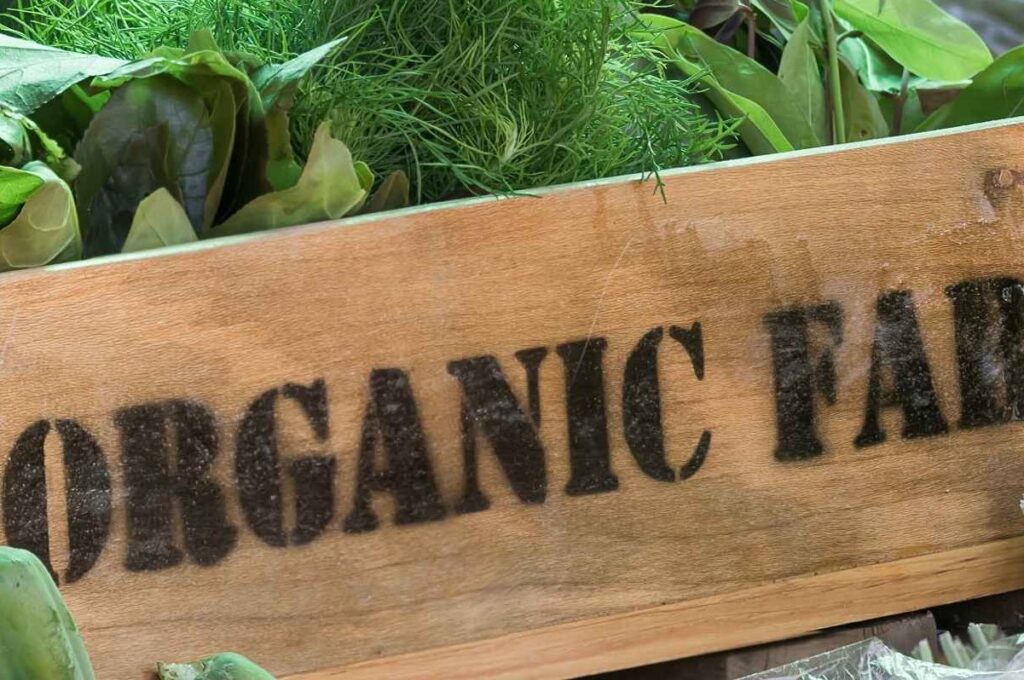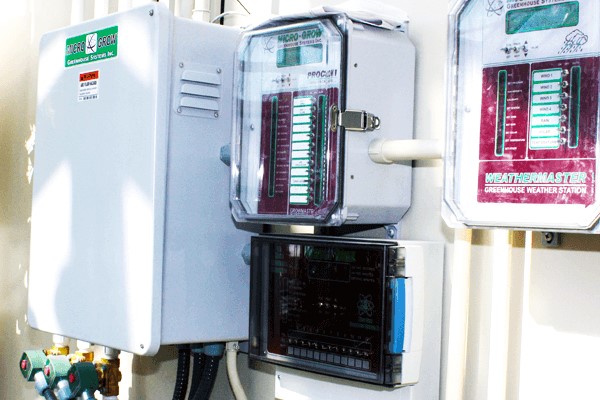Services
Explore Our Above Standard Agrology Services

We create a comprehensive Integrated Pest Management for your crops. We recommend preventative and curative measures, including chemical and biological control of diseases and insects
We optimize frequency, intensity, and quality of your irrigation. We are proficient with all hydroponic methods, including ebb and flow, and drip irrigation


We introduce organic production outside of the PCP (Pest Control Product) system, required for vertical horticulture
We create single nutrient fertilizer recipes specific to your crop development stages to boost your yield and quality


We optimize your climate parameters for the highest productivity of your greenhouse or indoor cultivation facility
We recommend most suitable crop inputs, including substrates, for your crops and facility

Choose The Right Package
Fits Your Production Goal
5 Day Package
- Suitable for Medium to Large Size Greenhouse
- Comprehensive Analysis on Greenhouse Improvement
- Complete Customized Boosting Plan from ALL 6 Aspects
- Assessment on integration of precision agriculture technologies
- Farm data analysis and interpretation
- Training and support for methodology adoption
Pick Specialties You Need
- Training and support for methodology adoption
- Analysis on Greenhouse Improvement and Customized Boosting Plan for selected Aspect(s)
- Farm data analysis and interpretation
- Training and support for methodology adoption
Flexible Based on Farm Size
- Suitable for Small to Medium Size Greenhouse
- Comprehensive Analysis on Greenhouse Improvement
- Complete Customized Boosting Plan from ALL 6 Aspects
- Assessment on integration of precision agriculture technologies
- Training and support for methodology adoption
- Training and support for methodology adoption
Why Us
25+ Years of R&D in Agriculture Science
Decades of agricultural research worldwide, enhancing farming with innovative, proven solutions for higher yields, sustainability, and profitability.
Customized Solutions to Boost Crop Output
Over 25 years of expertise in agriculture, offering customized solutions to maximize output, efficiency, and sustainability through innovative practices.
We Specialize in Over 25 Crops
Specializing in cultivating 25 crops with tailored solutions for optimized yields, quality, and sustainability, ensuring robust growth and harvest success.
Commitment to Innovation and Excellence
We drive innovation and excellence, pushing boundaries with cutting-edge approaches to elevate agricultural practices for sustainable growth, efficiency, and quality.

Cases Study
- Aphids & powdery mildew
- Light regime and climate control
- Pesticides application
Aphids and powdery mildew were constant issues at a large greenhouse complex. Crop loss was as high as 60% over the period of 6 months. The quality of the product tanked. Upon introduction of all six components of Integrated Pest Management program, namely Prevention, Identification, Monitoring, Action Thresholds, Management Options and Evaluation, it's a result to reduce the disease and insect pressure within 4 months and clean the facility completely within 5 months. It was reported that up to 9 Millions of loss was recovered.

Light regime and climate control at an indoor cultivation facility prevented realization of genetic potential of highly productive cultivars of a soft fruit. Our optimization of the climate parameters, including light intensity and duration, allowed an increase in yield of over 20%. Simultaneously, alternating humidification and dehumidification regimes reduced infestation with spider mites, promoted calcium uptake, and reduce the rate of powdery mildew, which in turn resulted in less pesticides being used.

Since PMRA did not allow use of pesticides in indoor cultivation facilities [link], our specialists developed a new Pest Management program for vertical horticulture, which included organic and biological control tools among other measures. Implementation of the program allowed for effective control of diseases and insects, exceeding the efficiency traditional programs which would otherwise include use of pesticides. The program was in full compliance with federal PMRA regulations in Canada.

Common Queries

What is Sustainability Farming
Sustainable farming, also known as sustainable agriculture, refers to agricultural practices and methods that aim to maintain the productivity of land and resources over the long term while minimizing environmental impact. The goal of sustainable farming is to meet the needs of current generations for food, fiber, and other agricultural products, without compromising the ability of future generations to meet their own needs.
Key principles of sustainable farming include:
Conservation of Resources: Efficient use of water, soil, energy, and other natural resources to minimize waste and environmental degradation.
Biodiversity: Promoting biodiversity in crops and ecosystems to enhance resilience against pests, diseases, and climate change impacts.
Soil Health: Enhancing soil fertility and structure through practices such as crop rotation, cover cropping, and organic amendments to maintain long-term productivity.
Natural Pest and Disease Management: Using integrated pest management (IPM) strategies that prioritize biological, cultural, and mechanical controls over synthetic pesticides.
Water Management: Adopting water-efficient irrigation techniques and preserving water quality through responsible agricultural practices.
Community and Social Well-being: Supporting local economies, respecting labor rights, and fostering community engagement in agricultural practices.
Economic Viability: Ensuring profitability and economic resilience for farmers through sustainable practices that reduce input costs and enhance market opportunities.
Overall, sustainable farming aims to strike a balance between environmental stewardship, economic viability, and social responsibility, contributing to the long-term sustainability of agriculture and food
How to apply pest control efficiently?
Efficient pest control involves implementing integrated pest management (IPM) strategies that minimize reliance on chemical pesticides while effectively managing pest populations. Here are steps to apply pest control efficiently:
Monitor and Identify Pests: Regularly inspect crops for signs of pests and identify the specific pests present. Use traps, visual inspections, and monitoring tools to detect early infestations.
Set Action Thresholds: Determine the level of pest presence or damage at which action is necessary. This helps prevent unnecessary treatments and minimizes pesticide use.
Implement Preventive Measures: Focus on cultural and mechanical controls to prevent pest outbreaks. Examples include crop rotation, planting resistant varieties, using physical barriers like nets or row covers, and maintaining proper sanitation practices.
Biological Control: Introduce natural enemies of pests, such as predatory insects, parasitoids, or pathogens, to help suppress pest populations. Encourage biodiversity to support beneficial organisms.
Use Targeted Chemical Treatments: If pesticide application is necessary, choose selective pesticides that target specific pests while minimizing harm to beneficial organisms and the environment. Apply pesticides during times when pests are most vulnerable and follow label instructions rigorously.
Monitor and Evaluate Effectiveness: Regularly assess the impact of pest control measures to determine their effectiveness. Adjust strategies based on monitoring results and pest dynamics.
Record Keeping: Maintain detailed records of pest monitoring, control actions taken, and outcomes. This information helps in refining pest management strategies over time and complying with certification and regulatory requirements.
Educate and Train: Provide training to farm workers on pest identification, monitoring techniques, and the principles of IPM. Foster a culture of proactive pest management across the farm.
By adopting an integrated approach that combines multiple pest control tactics, farmers can achieve effective pest management while minimizing environmental impact and ensuring sustainable crop production.
What is the regulation for greenhouse fertilization?
In Canada, regulations related to greenhouse fertilization are primarily aimed at ensuring the safe and responsible use of fertilizers while protecting environmental and human health. Here are some key aspects of the regulations:
Fertilizer Act and Regulations: The Fertilizers Act and Regulations govern the manufacture, sale, import, and export of fertilizers in Canada. This includes all types of fertilizers used in greenhouse operations, such as liquid fertilizers, granular fertilizers, and water-soluble fertilizers.
Fertilizer Product Registration: All fertilizers sold in Canada must be registered under the Fertilizers Act. This process ensures that fertilizers meet Canadian standards for composition, safety, and efficacy. Registrants must provide detailed information about the fertilizer product, including its ingredients, nutrient content, and intended use.
Labeling Requirements: Fertilizer labels must comply with specific requirements set out in the Fertilizers Regulations. Labels must include information such as the guaranteed analysis of nutrients (e.g., nitrogen, phosphorus, potassium), directions for use, precautionary statements, and the registration number issued by the Canadian Food Inspection Agency (CFIA).
Good Agricultural Practices (GAP): Greenhouse operators are encouraged to follow Good Agricultural Practices, which include proper handling, storage, and application of fertilizers to minimize environmental impact and ensure crop safety. This may involve training staff on fertilizer application techniques, maintaining accurate records of fertilizer use, and implementing spill prevention measures.
Environmental Protection: Regulations also aim to protect the environment by preventing nutrient runoff and groundwater contamination from excessive fertilizer use. Greenhouse operators may be required to comply with provincial or municipal regulations related to water quality protection and nutrient management.
Integrated Pest Management (IPM): While not directly related to fertilization, many greenhouse operations integrate fertilization practices with IPM strategies to optimize nutrient uptake by plants and reduce the likelihood of pest and disease outbreaks.
It’s important for greenhouse operators in Canada to stay informed about federal, provincial, and local regulations pertaining to fertilization practices. The CFIA and provincial agriculture departments often provide resources and guidance to help growers comply with regulatory requirements while promoting sustainable agriculture practices.
What is Social Responsibility for Farming?
Social responsibility in sustainable farming refers to the ethical and equitable considerations that farmers and agricultural stakeholders should uphold to benefit society as a whole. Here are key aspects of social responsibility in sustainable farming:
Worker Rights and Welfare: Ensuring fair wages, safe working conditions, and access to healthcare and education for farm workers. This includes respecting labor laws, providing training opportunities, and promoting a respectful and inclusive workplace.
Community Engagement: Engaging with local communities to understand their needs and concerns, and collaborating on sustainable farming practices. This may involve supporting local economies, participating in community events, and maintaining open communication with neighbors.
Food Security and Access: Contributing to food security by producing nutritious and affordable food for local and regional markets. Sustainable farming practices that prioritize soil health, water conservation, and biodiversity contribute to long-term food availability and accessibility.
Animal Welfare: Practicing humane treatment of animals raised for food production, including providing adequate living conditions, access to natural behaviors, and veterinary care.
Education and Knowledge Sharing: Sharing knowledge and best practices in sustainable farming with other farmers, researchers, and the broader community. This includes participating in agricultural extension programs, hosting farm tours, and mentoring new farmers.
Cultural Heritage and Traditions: Respecting and preserving cultural heritage and traditional farming practices that contribute to local identity and sustainable land stewardship.
Ethical Sourcing and Supply Chain Transparency: Ensuring transparency and accountability throughout the supply chain, from sourcing inputs to distributing products. This includes promoting fair trade practices and minimizing environmental and social impacts associated with farming operations.
Environmental Justice: Addressing and mitigating any disproportionate environmental impacts of farming activities on marginalized or vulnerable communities. This involves conducting thorough environmental assessments and implementing measures to minimize negative impacts on air quality, water resources, and biodiversity.
By embracing social responsibility in sustainable farming, farmers contribute to a more equitable and sustainable food system that respects human rights, supports local communities, and preserves natural resources for future generations.
Is every greenhouse production can boost?
While greenhouse production can often be optimized and increased through various techniques and technologies, there are practical limits to how much output can be boosted in any agricultural setting, including greenhouses. Here are some factors to consider:
Physical Constraints: Greenhouses have finite space and resources such as light, water, and nutrients. There’s a limit to how many plants can be grown effectively within a given area while maintaining optimal growing conditions.
Crop Specificity: Each crop has specific growth requirements, including light intensity, temperature, humidity, and nutrient needs. Meeting these requirements is crucial for maximizing yield, but it also means that not all crops can be grown in the same greenhouse environment simultaneously.
Environmental Factors: Greenhouse production can be affected by external factors such as climate variability, which can impact energy costs for heating or cooling, as well as water availability during droughts or humidity levels during wet seasons.
Technological and Management Practices: Advancements in greenhouse technology, such as automated climate control systems, LED lighting, hydroponic or aeroponic systems, and improved crop management practices can enhance productivity. However, adopting these technologies requires investment and expertise.
Sustainability Considerations: Increasing production must also consider sustainable practices that minimize environmental impact and conserve resources. Over-intensive farming practices can lead to soil depletion, water contamination, and other environmental issues.
Market Demand: Boosting production should also align with market demand and economic viability. Producing more crops does not always guarantee profitability if there is not sufficient demand or if production costs exceed market prices.
In summary, while greenhouse production can often be optimized and increased through technological advancements, efficient management practices, and careful planning, there are practical limitations based on physical, environmental, and economic factors. Sustainable and balanced approaches that consider both productivity goals and resource conservation are essential for long-term success in greenhouse farming.
What is the Training Required Upon Our Services?
Training for greenhouse staff is crucial to ensure they have the knowledge and skills necessary to implement the recommendations provided by agrologist consultants effectively. Here are some key areas of training that greenhouse staff may benefit from after receiving consultation services:
Crop Management Practices: Training should cover specific crop management practices recommended by the agrologist, including planting, spacing, pruning, and harvesting techniques tailored to the crops grown in the greenhouse.
Integrated Pest Management (IPM): Staff should receive training on IPM strategies recommended by the agrologist, such as pest identification, monitoring techniques, and the proper application of biological controls or pesticides when necessary. Emphasis should be placed on reducing reliance on chemical pesticides through cultural and biological control methods.
Fertilization and Nutrient Management: Training should focus on proper fertilization practices based on soil tests and nutrient recommendations provided by the agrologist. This includes understanding nutrient requirements, fertilizer application methods, and the importance of maintaining balanced nutrient levels for crop health.
Water Management: Training should cover efficient irrigation techniques recommended by the agrologist, including scheduling, monitoring soil moisture levels, and using water-saving technologies such as drip irrigation or automated irrigation systems.
Climate Control and Environmental Management: Staff should be trained on greenhouse climate control systems, such as heating, ventilation, and cooling (HVAC) systems, as well as managing environmental factors like light intensity, humidity, and CO2 levels. This training ensures optimal growing conditions as advised by the agrologist.
Safety and Regulatory Compliance: Training on workplace safety practices, handling of agricultural chemicals, and compliance with regulatory requirements related to pesticide use, fertilizer application, and environmental protection should be provided to ensure staff operate in a safe and legal manner.
Record Keeping and Documentation: Staff should be trained on maintaining accurate records of crop management practices, pest monitoring, fertilizer applications, irrigation schedules, and any other activities recommended by the agrologist. This documentation is essential for tracking progress, complying with certification requirements, and making informed decisions.
Continuous Learning and Professional Development: Encouraging ongoing learning opportunities, such as workshops, seminars, and online courses related to greenhouse management and sustainable agriculture, helps staff stay updated on industry trends and best practices.
By investing in comprehensive training programs tailored to the recommendations of agrologist consultants, greenhouse staff can enhance their skills, improve crop productivity, and contribute to the overall success and sustainability of the greenhouse opera
Tell Us
What is Your Question

